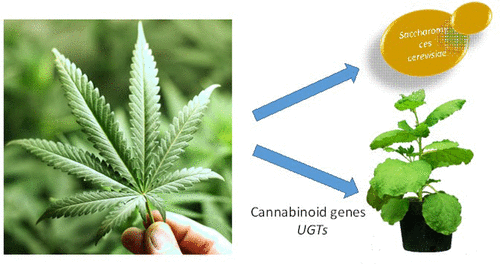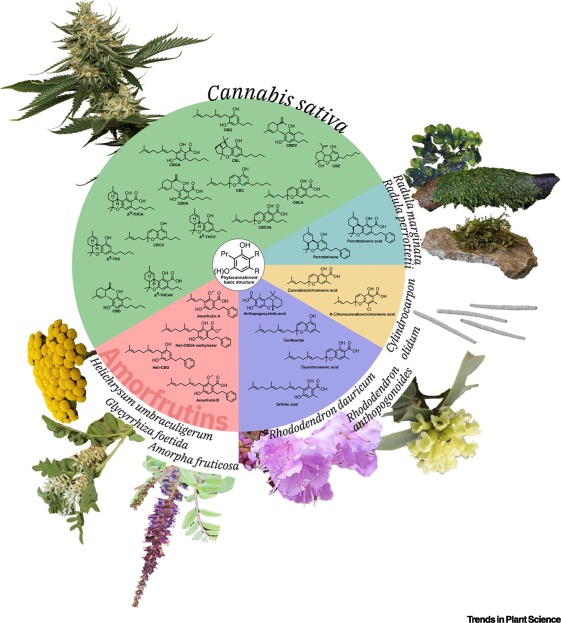Two new publications: The recent outcome of Thies Gülck’s PhD
Two new papers by Thies Gülck as first author have recently been published. The first paper is published in Journal of Natural Products and has the title “Synthetic Biology of Cannabinoids and Cannabinoid Glucosides in Nicotiana benthamiana and Saccharomyces cerevisiae”. The second paper is published in Trends in Plant Science and has the title “Phytocannabinoids- Origins, biosynthesis and synthetic biology”. Please find more information about the papers below.
First paper: Synthetic Biology of Cannabinoids and Cannabinoid Glucosides in Nicotiana benthamiana and Saccharomyces cerevisiae

Abstract: Phytocannabinoids are a group of plant-derived metabolites that display a wide range of psychoactive as well as health-promoting effects. The production of pharmaceutically relevant cannabinoids relies on extraction and purification from cannabis (Cannabis sativa) plants yielding the major constituents, Delta9-tetrahydrocannabinol and cannabidiol. Heterologous biosynthesis of cannabinoids in Nicotiana benthamiana or Saccharomyces cerevisiae may provide cost-efficient and rapid future production platforms to acquire pure and high quantities of both the major and the rare cannabinoids as well as novel derivatives. Here, we used a meta-transcriptomic analysis of cannabis to identify genes for aromatic prenyltransferases of the UbiA superfamily and chalcone isomerase-like (CHIL) proteins. Among the aromatic prenyltransferases, CsaPT4 showed CBGAS activity in both N. benthamiana and S. cerevisiae. Coexpression of selected CsaPT pairs and of CHIL proteins encoding genes with CsaPT4 did not affect CBGAS catalytic efficiency. In a screen of different plant UDP-glycosyltransferases, Stevia rebaudiana SrUGT71E1 and Oryza sativa OsUGT5 were found to glucosylate olivetolic acid, cannabigerolic acid, and Delta9-tetrahydrocannabinolic acid. Metabolic engineering of N. benthamiana for production of cannabinoids revealed intrinsic glucosylation of olivetolic acid and cannabigerolic acid. S. cerevisiae was engineered to produce olivetolic acid glucoside and cannabigerolic acid glucoside.
Authors: T. Gülck, J.K. Booth, Â. Carvalho, C. Crocoll, M.S. Motawie, B.L. Møller, J. Bohlmann, N.J. Gallage
You can find the paper here: https://doi.org/10.1021/acs.jnatprod.0c00241
Second paper: Phytocannabinoids- Origins, biosynthesis and synthetic biology

Abstract: Phytocannabinoids are bioactive natural products found in some flowering plants, liverworts, and fungi that can be beneficial for the treatment of human ailments such as pain, anxiety, and cachexia. Targeted biosynthesis of cannabinoids with desirable properties requires identification of the underlying genes and their expression in a suitable heterologous host. We provide an overview of the structural classification of phytocannabinoids based on their decorated resorcinol core and the bioactivities of naturally occurring cannabinoids, and we review current knowledge of phytocannabinoid biosynthesis in Cannabis, Rhododendron, and Radula species. We also highlight the potential in planta roles of phytocannabinoids and the opportunity for synthetic biology approaches based on combinatorial biochemistry and protein engineering to produce cannabinoid derivatives with improved properties.
Authors: T. Gülck, B.L. Møller
You can find the paper here: https://doi.org/10.1016/j.tplants.2020.05.005
